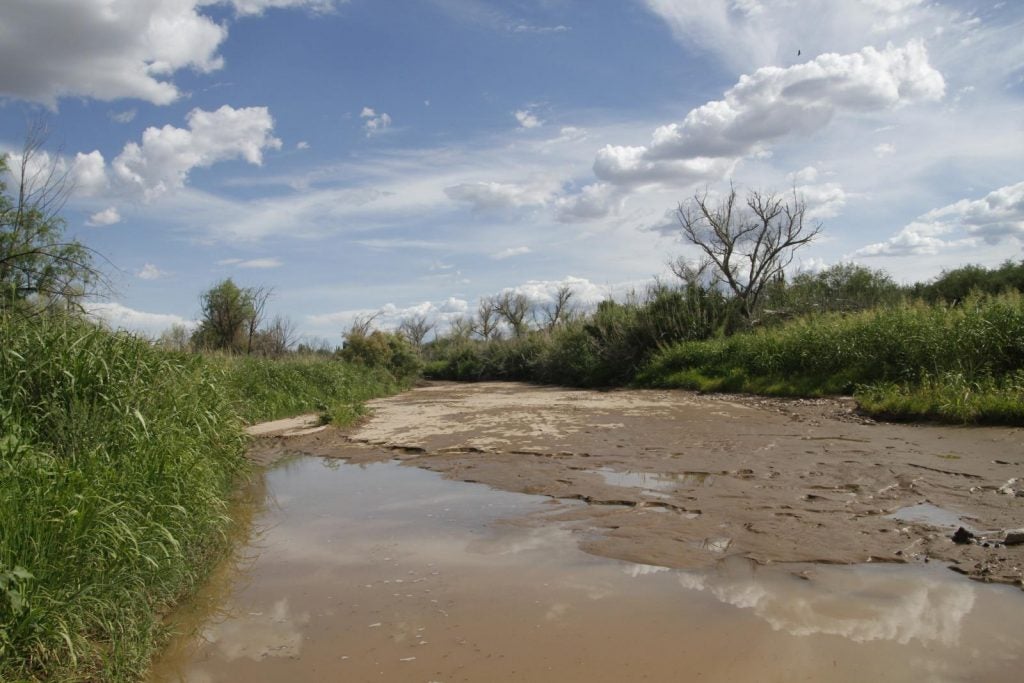Editor’s note: This post was updated on May 23, 2019.
While Colorado River surface water supplies have dominated news headlines recently, Arizona communities face another important water challenge: rapidly declining groundwater levels.
Arizona relies on groundwater for about 40% of its water supply, yet groundwater resources outside of the state’s biggest urban areas are largely unprotected and unregulated, posing a risk to long-term economic growth, community resilience and healthy flowing rivers.
HB 2467, a bill that was signed by Gov. Doug Ducey on May 22, takes an important step forward to address groundwater challenges in Mohave and La Paz counties.
Mohave County is in northwest Arizona and includes western portions of the Grand Canyon and the city of Kingman on historic Route 66. La Paz County is just south of Mohave and includes the Interstate 10 corridor, part of the Kofa National Wildlife Refuge and important perennial streams. In recent years, residential and other small wells have increasingly seen water levels dropping as more large-capacity wells are drilled for commercial agricultural operations moving into the region, often from outside Arizona.
Groundwater management leader
Arizona established itself as a regional and global leader in groundwater management through the passage of the 1980 Groundwater Management Act, which created five Active Management Areas (AMAs), mostly in the more populated Phoenix and Tucson metro areas.
Most AMAs have a management goal of achieving safe yield, a status in which water going in and water going out of aquifer systems is in balance. The resulting stability, predictability and reliability of these groundwater supplies has acted as a foundation for economic growth.
Beyond AMAs
More than 80% of Arizona residents reside within the predominantly urban and suburban AMAs. However, about 85% of Arizona lands, including in Mohave and La Paz counties, lie outside these areas, as do some of the last free-flowing rivers in the Southwestern U.S., such as the Verde and San Pedro rivers, and some of the most biologically rich regions in the nation. Furthermore, in many rural areas we know little about how much groundwater is being withdrawn year over year. New Arizona bill will create an inclusive, locally driven, science-based stakeholder process to help solve groundwater challenges in two rural counties Share on X
Science-based, data-driven, equitable and forward-focused planning is imperative for ensuring reliable, sufficient water supplies for people, businesses and nature. But communities in Mohave and La Paz counties, like most of the state’s rural communities that rely groundwater, have very few tools for managing their groundwater future.
To begin addressing these challenges, HB 2467 creates two local stakeholder study committees, one in La Paz County and one in Mohave County, to examine groundwater depletion and water data and develop potential solutions tailored to each region’s needs.
Appointed by the president of the Arizona Senate or speaker of the House of Representatives, study committee members would include a county supervisor, farmer or rancher, city council member or mayor, an industrial water user, and a representative of a natural resource conservation district, among others.
Environmental Defense Action Fund and partners that make up the Water for Arizona Coalition support HB 2467 because it sets up an inclusive, locally driven, science-based stakeholder process to consider groundwater challenges and data and develop solutions that local communities may propose to the Legislature for consideration.
The stakeholder processes established by HB 2467 will no doubt be difficult. But we know that creative and durable solutions to water issues emerge when diverse interests come together, compromise and work through tough challenges in good faith.
We saw this approach succeed with the Colorado River Drought Contingency Plan, and we believe it can work in Mohave and La Paz counties, too.










